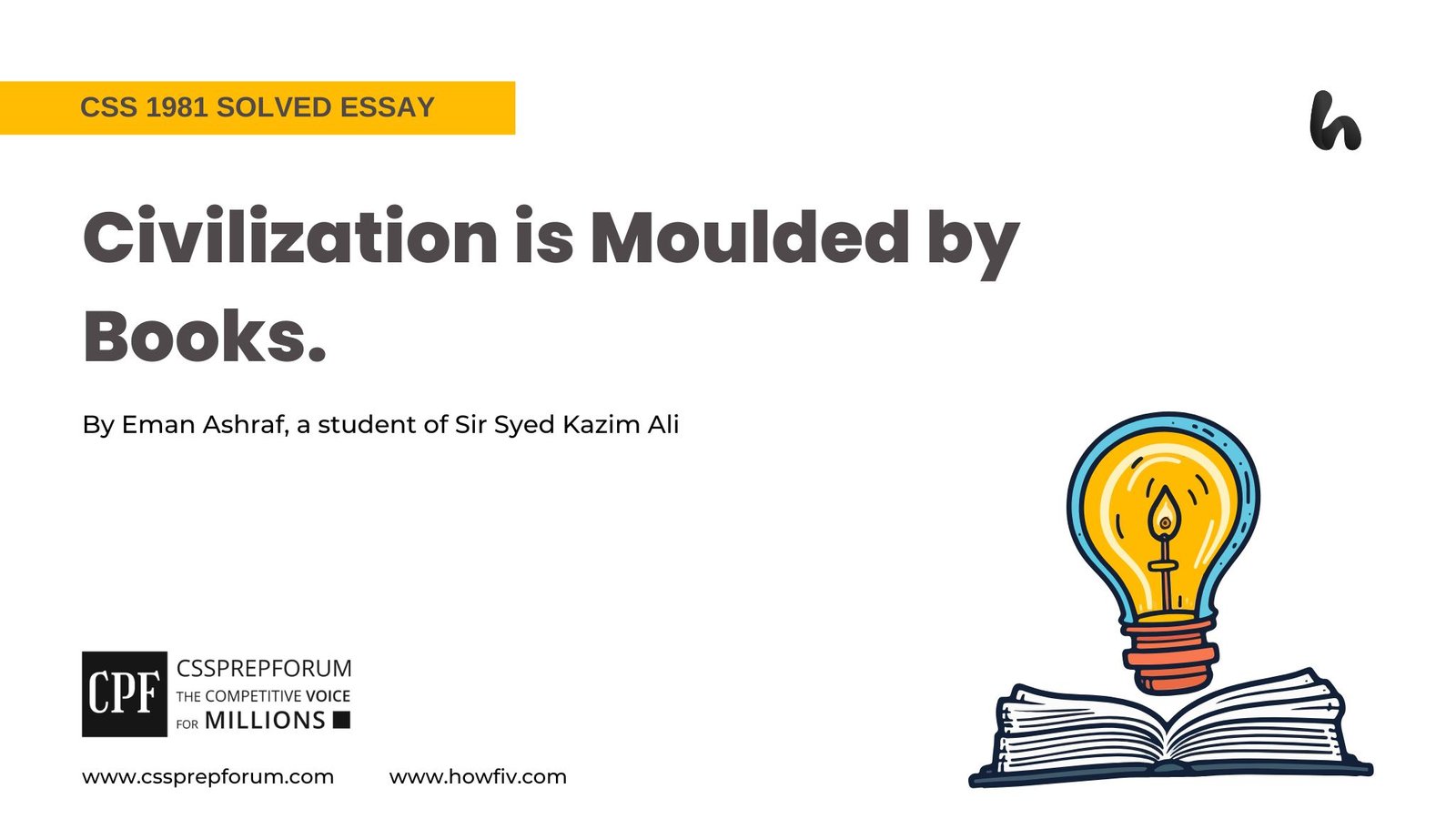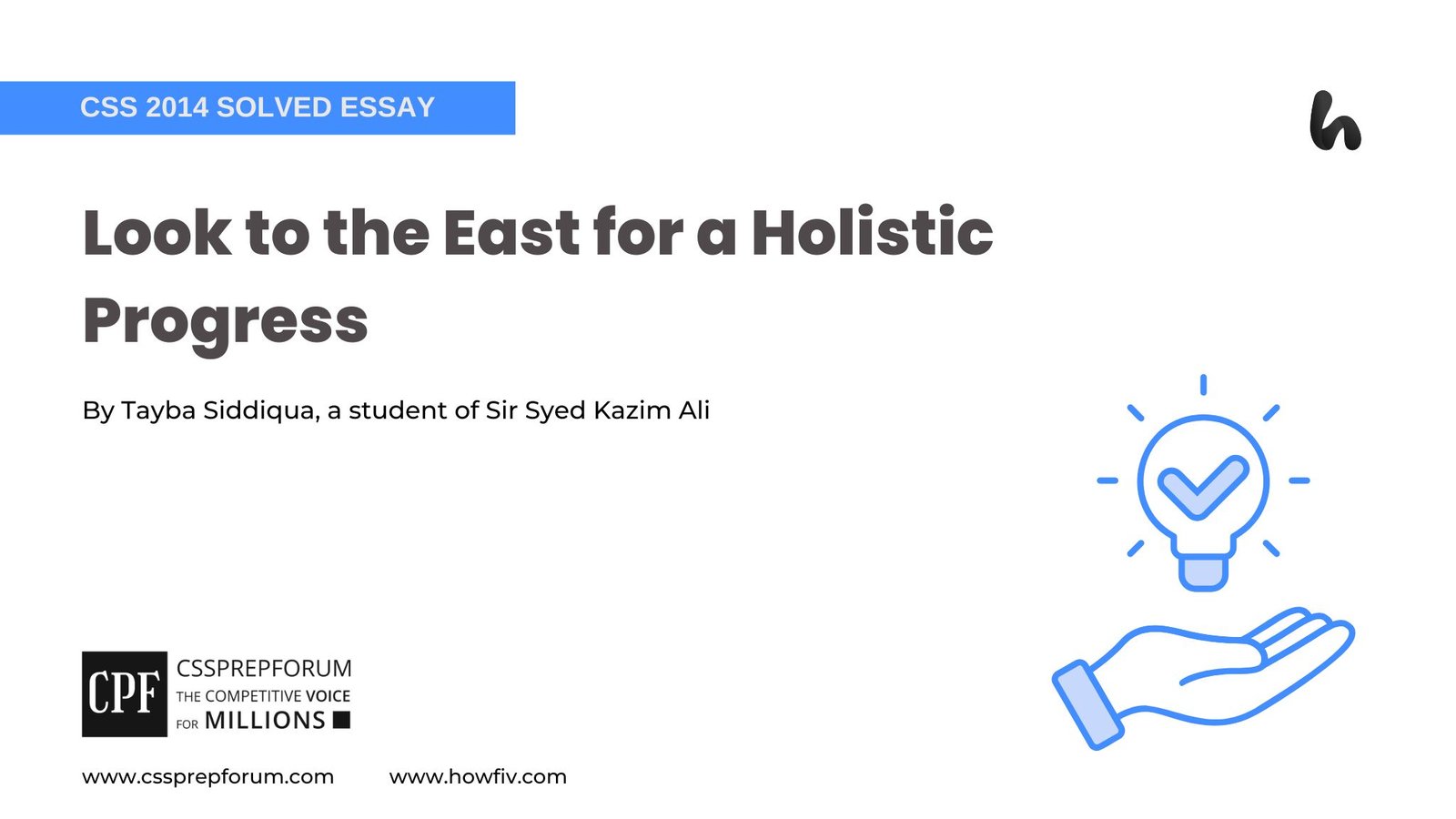MS 2021 Solved Pakistan Affairs Past Papers | Discuss Pakistan’s Economic Problems in the Musharraf Era
The following question of PMS Pakistan Affairs 2021 is solved by Miss Iqra Ali, the best Pakistan Affairs Coach, on the guided pattern of Sir Syed Kazim Ali, which he taught to his students, scoring the highest marks in compulsory subjects for years. This solved past paper question is uploaded to help aspirants understand how to crack a topic or question, how to write relevantly, what coherence is, and how to include and connect ideas, opinions, and suggestions to score the maximum.

Question Breakdown
In this question, the examiner has asked you to examine how development without social change generates alienation in society. However, the examiner links the question with another aspect and asks you to discuss Pakistan’s economic problems in the Musharraf era in light of the above statement. Moreover, it is better to answer critically and analytically despite being descriptive. So, start your answer with an introduction by including all the leading points you will write in your answer. Then, answer analytically in the body and also make subheadings. At the end, conclude your answer.
Outline
1-Introduction
2-A Bird Eye View on the Economic Development during the Musharraf Era
3-Critically Analyze Despite Economic Development during Musharraf Era, Neglecting Social Change Generated Social Alienation and Reason of Structural Issues in the Economy Associated with it.
- ✓Structural Issues Associated with Pakistan’s Economy during the Musharraf Era
- ✓Musharraf’s Policy of Economic Development Excluded Social Change
- ✓Resulting in Stringent Social Alienation
4-Conclusion

Answer to the Question
Introduction
Pakistan during the Musharraf era saw an economic boom where the average annual growth rate (GDP) was 6-7% between 2003-7. However, the growth was more concentrated in urban areas. Technically, specific classes were taking advantage of the economic growth. Therefore, large segments of society remained excluded, leading to a disaster termed Social Alienation despite Economic Stability. The following points critically analyze why societal alienation happened during the Musharraf era despite economic development. First, Musharraf’s government did not pay attention to the structural issues confronting the economy, such as debt dependency. However, the financial growth came from foreign aid and loans; as a result, external debt increased. Then, the agricultural sector got less attention. Comparatively, the government remained persistent in developing the industrial and service sectors of the economy. As a result, large-scale unemployment led to the alienation of rural segments of the population because the agricultural zone employed large-scale masses. Thus, the financial strength brought economic fruits for the elites in urban areas, and the rural areas and lower-income groups were victims of poverty, unemployment, and underdevelopment. Thus, all these factors led to unequal development and the alienation of the countryside.
A Bird’s Eye View on the Economic Development during the Musharraf Era
As I discussed, during the Musharraf era, the country saw an economic boom where the average annual growth rate (GDP) was 6-7% between 2003-2007; however, the reason was significant structural reforms and macroeconomic stability. The government implemented liberalization policies to strengthen the boom further, especially in telecommunications and banking. As a result, the country received significant Foreign Direct Investments (FDI). Further, the government focused on exports, especially textile exports, to inhibit current account deficits. To further strengthen the GDP, several infrastructure developmental projects were initiated, such as the development of road networks and Gwadar Port. Musharraf privatized state-owned enterprises to increase their efficiency. All these initiatives led to economic development and prosperity. One significant aspect of this growth was its concentration in urban areas. So, technically, specific classes were taking advantage of the economic growth. Therefore, large segments of society remained excluded, leading to a disaster termed Social Alienation despite Economic Stability.
Critically Analyze Despite Economic Development during Musharraf Era, Neglecting Social Change Generated Social Alienation and Reason for Structural Issues in the Economy Associated with It
The following points critically analyze why societal alienation during the Musharraf era happened despite economic development and that even robust and advanced economic policies fail if they fail to incorporate social change into their objectives, and, as a result, it causes the menace of societal alienation. Besides, it deals with the structural issues associated with the country’s economy during the Musharraf era.
- ✓Structural Issues Associated with Pakistan’s Economy during the Musharraf Era
First, the government did not pay attention to the structural issues confronting the economy. So, despite economic growth, there was unequal development in society. For illustration, there was a debt dependency, and the fiscal model was dependent on foreign aid and loans, which led to increased external debt. Second, the economic policies were not on a long-term basis. So, short-term economic policies did not include a model to solve the issue regarding energy. Therefore, the energy shortages of late 2000 caused several disruptions, inhibiting long-term financial gains. Then, the agricultural sector, the largest sector of the economy, was neglected, and the focus of the policies remained consistent on the industrial and service sectors of the economy. As a result, large-scale unemployment led to the alienation of several segments of the population because the agricultural zone employed large-scale masses. Further, the reduced purchasing power of lower segments due to inflation further adds fuel to the fire.
- ✓Musharraf’s Policy of Economic Development Excluded Social Change
From the aforementioned facts, it is evident that Musharraf’s policy excluded social change because there was a lack of equitable social progress. The following areas demonstrated the debacle of unequal development. As I discussed, the financial strength brought economic fruits for the elites in urban areas. However, the rural areas and lower-income groups were victims of poverty, unemployment, and underdevelopment. Thus, income inequality led to the alienation of marginalized groups of society. Next, unemployment disturbed the informal labor markets, leading to dismal conditions in rural areas. Besides, formal employment increased, benefitting the rural population. Apart from this, the economic policy did not formalize the passage of public spending on the areas of social development, such as Health and Education, inhibiting access to quality services for rural populations. The total investment in these sectors was less than 2% of the GDP. Although Musharraf’s government devised a policy to enhance female representation in the local government, it did not pay attention to gender inequality in education. That is why the issue of the lack of participation of women in the workforce remains persistent.
- ✓Resulting in Stringent Social Alienation
Indubitably, the policies lack inclusiveness and social development, leading to societal alienation. First, the urban-rural divide exacerbated issues between the populations of urban and rural areas of provinces. The federating units were showing discontent on the fiscal share of Punjab on the devisable pool, and the urban-rural added fuel to the smoldering fire. One perceptible aspect of neglecting social change was that despite knowing that the large-scale population of the country did not ever compensate on religious terms, the policies were explicitly tilted toward modernization. In effect, the socio-religious class took refuge in extremism. However, these extremist tendencies were exacerbated in areas where there is high unemployment and poverty. Last, the wealth gap eroded the trust of local people in the state and its institutions.
Conclusion
To conclude, societal alienation during Musharraf’s era happened because the government did not pay attention to large-scale structural reforms. First, the growth was more concentrated in urban areas, and specific classes took advantage of the economic growth. Therefore, large segments of society, such as rural and low-income groups, faced unemployment and poverty. The following points critically analyze why societal alienation was caused during the Musharraf era despite economic development. First, Musharraf’s government did not pay attention to the structural issues confronting the economy, such as debt dependency, leading to an increase in external debt. Then, the agricultural sector did not get the much-needed attention, and the focus of policies remained consistent on the industrial and service sectors of the economy. As a result, large-scale unemployment led to the alienation of several segments of the population because the agricultural sector employed the masses. Thus, the financial strength brought economic fruits for the elites in urban areas, and the rural areas and lower-income groups were victims of poverty, unemployment, and underdevelopment. Thus, the unequal development led to the alienation of marginalized groups of society.
CSS Solved Past Papers’ Essays
Looking for the last ten years of CSS and PMS Solved Essays and want to know how Sir Kazim’s students write and score the highest marks in the essays’ papers? Then, click on the CSS Solved Essays to start reading them.
CSS Solved Essays
CSS Solved General Science & Ability Past Papers
Want to read the last ten years’ General Science & Ability Solved Past Papers to learn how to attempt them and to score high? Let’s click on the link below to read them all freely. All past papers have been solved by Pakistan’s top CSS GSA coach having the highest score of their students.
General Science & Ability Solved Past Papers












